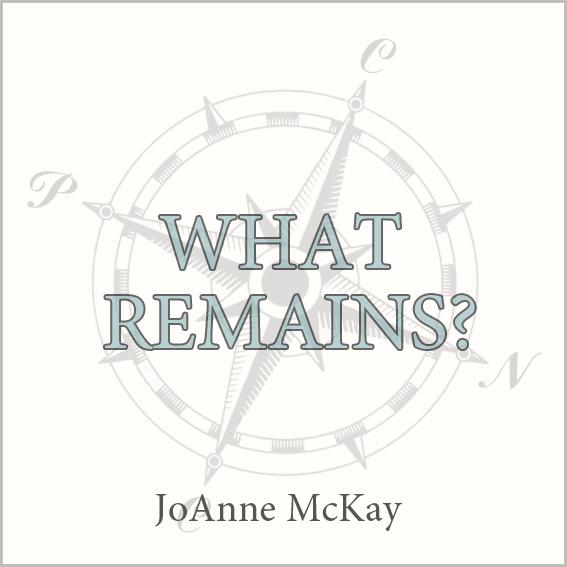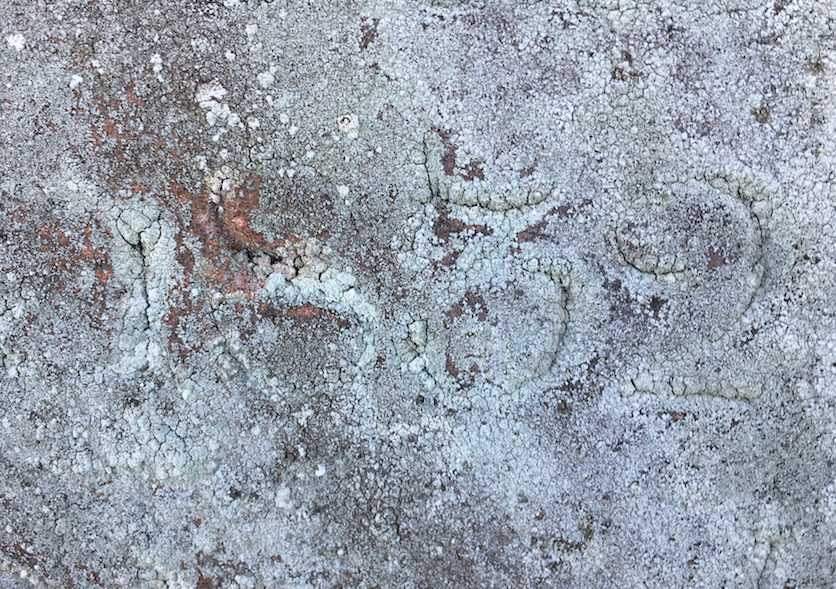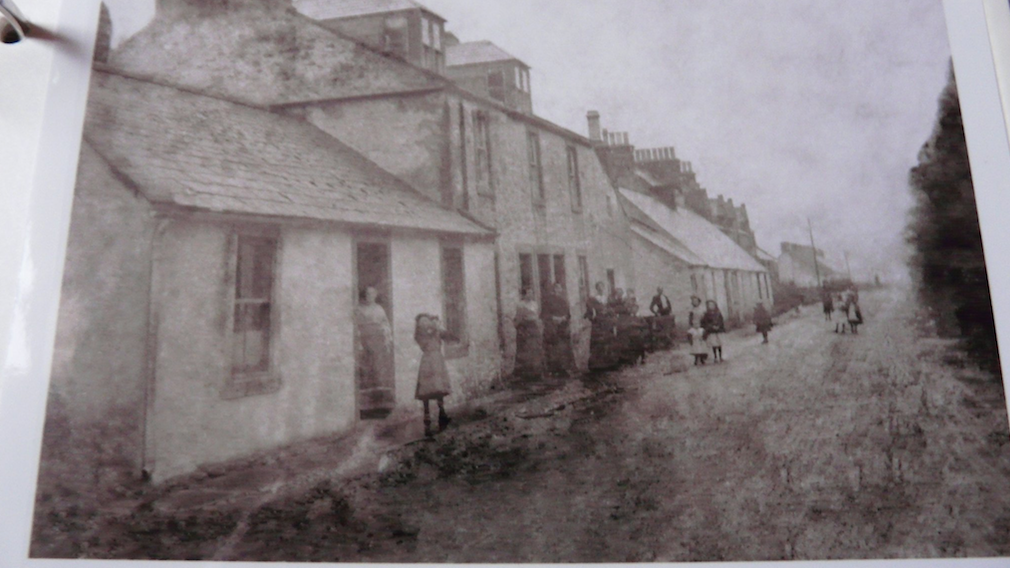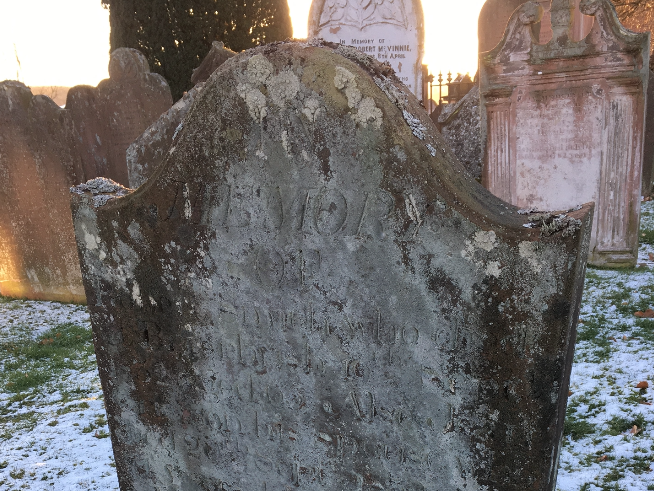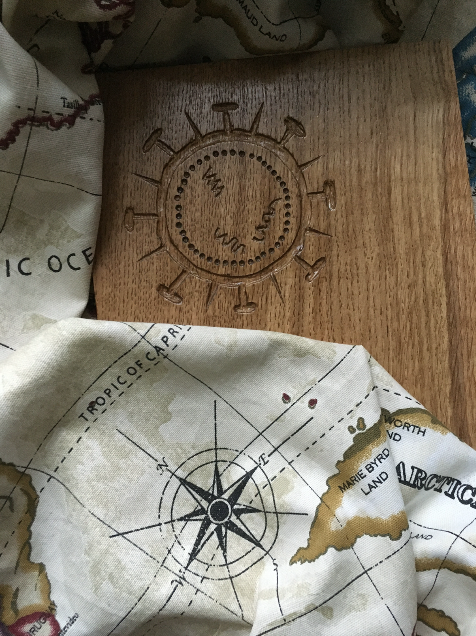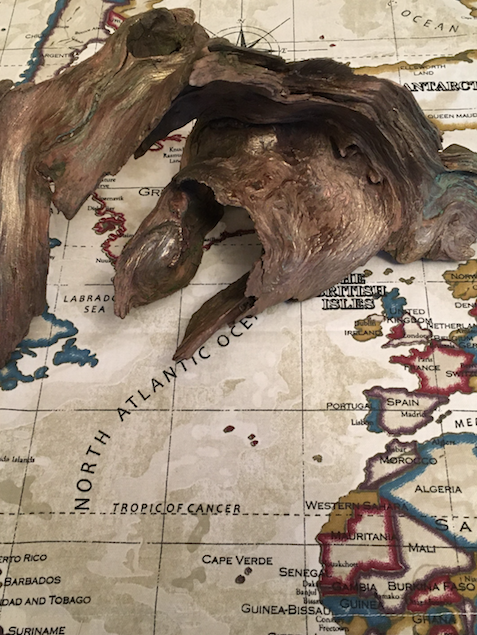
What Remains?
Temporality and Pandemic: Stories and the Public Sphere
Project by JoAnne McKay
Dumfries has experienced pandemics before. The most notable are those from modern history: cholera in 1832 and 1848, and influenza in 1918 and 1919. Why? Because of what remains – written words and built environment; newspaper records and memorials. Yet even these pandemics are all but gone from mind and public discourse. My intention is to research the extent and nature of what remains from these earlier pandemics in our public archives and museums and in our civic and sacred spaces, and to look at accessioning practice in relation to the current pandemic.
Through the research I want to:
- create a collated textual/visual archive of material from the previous pandemics;
- uncover gaps in our knowledge of these previous pandemic experiences, leading to ideas of what should be preserved now – and to an exploration of how;
- use records of the past to support and encourage people to consider their own experience of pandemic in 2020, to then tell and record their own histories and stories.
- creatively respond to the research through my own new writing and that of others, and develop ways of presenting it to the wider public.
In essence, the orientation and perspective that historical context, rooted in place, can give us: a plumb line to the now.
For information about JoAnne, visit our Participants page.
Update #1: December 2020
“There is no shortage of tangible objects that connect us directly to the pandemics of the past – the gravestones of many who died stand in our kirkyards yet – but continuity also exists in our landscape, and in our living things.
Searching for trees that were growing during the cholera outbreaks of 1832 and 1848, I mused on searching for trees alive during the plague pandemics, and in moving back through the plague centuries arrived at 1349, the year plague is first documented in Scotland. Tree-wise, that really left me two options – the yew, and the oak. They are the longest-living native species in these islands, and can survive for 700 years and more.
Seek and ye shall find; I suddenly realised, in lockdown, that I lived in an oak landscape. A great oak landscape. Trees are not easy to age accurately, involving as it does tape measures, tables and a bit of guesstimation but I found I could walk, in one hour, past oak trees that had germinated before the Black Death had reached our borders.
I named them for familiarity and delighted in their nature. Sessile, or Pedunculate? That’s Irish, or English? Which is Quercus petraea, or Quercus robur? Of course the species cross: to Quercus rosacea. The land holds them all here, and they hold both the land and its past. I am not a nature writer: my work focuses almost exclusively on the human perspective. I thought myself looking for symbols; I found ones insistent on, and persisting in, their own oak reality.”



Update #2: December 2020
Whilst the discovery of vaccination has now changed some aspects of the global response to pandemic diseases, much remains as it was during the mediaeval and renaissance periods of European history. The mantra of Test, Trace, Isolate has echoed in Dumfries many times before. During a plague period in Scotland in 1549, it was the job of the town’s Aldermen or Baillies to identify those who had the plague. Anyone who fell sick “in tyme of peste” had to be examined by them, and if they deemed your illness was plague, you were ordered to the isolation huts on the edge of the Moss, and had to remain there for thirty days. Anyone from your house, or who had been in your company, had to remain confined at home – “inclusit” – for fifteen days. A thorough cleansing was to be undertaken of your home and goods. Contact with “cleine” people was forbidden. The penalties for failing to comply with these regulations were strict: death, and the burning of your goods. Which doubtless served to focus the mind.
G.W Shirley, of the Dumfries and Galloway Natural History and Antiquarian Society, drew attention in his paper of 1914 (Notes on the Topography of Dumfries) to extant placenames redolent of these times of plague, exclusion and death: Bane Loaning is a thoroughfare that leads out of town towards Deidman’s Hirst and the Scabbit Isle, though it is one-way in the opposite direction these days. Deidman’s Hirst is now in the far more pleasant Sunnybank. The place of isolation itself was in the locality of Marchmount. If you survived isolation the only way back to town was through examination again, and the issuing of a licence. I have no death rates for the plague in Dumfries from this period: it’s been estimated that in London, during sixteenth century plague outbreaks, around a fifth of the total population died from the disease. There is little reason to suppose our town was very different. The deadly seriousness of pandemics for human populations is evidenced by the Burgh Court Books of 1549; what follows is the penalty to be imposed on rule breakers in plague times –
“Item it is statnit and ordanit that geif ony persoun dissobeyis the charge gewin to thaime be the aldersmen of the burgh anentis the pest thai salbe put forcesable to the mwyr and thair haldin for xx dayis eftir thai be clengit and thane to be haldin and inclusit thane for the space of xx dayis thereftir wtout faworis for their disobedience.”
That’s 40 days of isolation from the general populace. Stay safe, wash your hands, wear a mask… remember FACTS for a safer Scotland.



JoAnne’s map concept
JoAnne’s map concept, consisting of oaks, text and graphic design and art by Jan Cormack. Based on original estate map of Capenoch and additional mapping by Craig McKay. The oak leaves are from originals in a magazine published in 1832, year of Dumfries’ first cholera epidemic.



Update: Cholera
“Cholera having made its appearance at Sunderland, reached Newcastle on December 7, and on the 17th it was discovered at Haddington. January 14, it visited Tranent and Musselburgh, where it was very virulent; on the 31st the Edinburgh papers report three cases in that city. It appeared at the same time at Kirkintulloch, taking a leap of fifty miles at once. About 12th February, it reached Glasgow Paisley, and London. March 14, it appeared at Paris, when 23000 persons died in the course of one month. In April it passed over into Ireland, and reached the north of Scotland. May 12, it appeared in Liverpool. July 3, at Carlysle; about the same time at Kendal, Maryport, Penrith, and Ayr with great severity. At Tongueland, and at Springhill, Annandale, and, in September, in the village of Penpont, there were four cases and three deaths.”
from A Short Account of the Origin and Progress of the Cholera Morbus, particularly its ravages in Dumfries in September, October, and November 1832 by A Citizen, pub. 1833
It is a rare paragraph that contains the words “Paris” and “Penpont” but that the two should coincide in a mere 150 words encapsulates the nature of pandemics. Where people meet, people get infected. Paris in the 1830s was densely crowded: the pre-Haussmann city, a combination of medieval slums and Renaissance palaces. Penpont in 1832 would be immediately recognisable, though more industrious than today, with shops, a spade factory, several inns and two nearby mills. A metropolis of 700,000 souls and a minor village of some 600 that seem a world apart.
20,000 people died of cholera in Paris, primarily the poor, but including the Prime Minister, Casimir Pierre Périer, and General Lamarque, hero of the Napoleonic Wars. Lamarque’s funeral was the spark that flamed civil unrest in Paris and led to the June Rebellion, immortalised by Victor Hugo in Les Misérables. In Penpont, a gravestone in the churchyard simply states the following: “In memory of Robert Smith who died at Brierbush 19thSeptember 1832 aged 65. Also Jean Grierson his spouse who died 20th September 1832 aged 74 years.” Quiet, country tragedies.
And yet Périer, Lamarque and the Smiths had been killed by the same bacterium, Vibrio cholerae, which had been spreading around the world during what would become the second “Asian” Cholera pandemic. People move: we cross continents, oceans, seas, country borders and county boundaries, then walk or ride from city to town, from town to village, from house to house.
There is a reason that Pestilence has been one of the four horsemen since biblical times: if an infectious agent attacks one, it will attack an associated other, and we are a species of association. Global humanity is a set of enmeshed locals, and the tangles are thickening over time.
Update: Influenza
Spanish Flu killed an unimaginable number of people during the 1918–1919 pandemic: estimates range from 50 to 100 million. The deaths were unusual, as this was an influenza that killed not only the very young and the elderly, but seemed to target young adults “in the prime of life”. Influenza is a complicated disease which kills in a number of ways: there can be the “cytokine storm” that COVID is making us disturbingly familiar with, or death can come from secondary infections (notably pneumonia) given opportunity by the damage influenza causes.
The Spanish Flu was a true pandemic and its spread, most probably from an American army base, was undoubtedly facilitated by the movement of troops, civilians and refugees during the final years of the First World War. The horrors of that war, coupled with censorship about the epidemic by national governments, seem to have led to a general forgetting of what was one of the most deadly disease outbreaks in the history of humanity. Its first wave was in the early months of 1918; the deadly second wave began in late August that same year.
On the 31st of October 1918 the Dumfries and Galloway Standard and Advertiser reported that “…the present epidemic seems to be of a particularly virulent type, and the death rate from it all over the country is exceptionally high. In this respect Dumfries and Maxwelltown have suffered severely…” That same day the Dumfries School Board took the decision to close George Street, St Michael Street and Loreburn Street schools. The Academy also closed, as did many of the county schools.
A litany of deaths are detailed in the paper over the winter. Mr Robert Young, a 35-year old farmer of Hardgrove, Dalton, died on the 9th of November, leaving a widow and two young children. In early December, Private James A. Stewart died at Irish Street whilst home on leave. He was 24, and left a widow and child. The Closeburn postmaster, Mr Robert Gibson, died on New Year’s Eve at the age of 41.
And half a globe away, on the 24thof January 1919, The Sun, of Sydney, New South Wales, reported the following:
DIED ON FURLOUGH
Mr ARTHUR RAE’S SON
Private Donald Rae, a son of Mr Arthur Rae, organiser for the A.L.P., died from pneumonic influenza in Scotland while on furlough on January 15. Word to this effect was received by Mr Rae this morning. Private Rae, who enlisted in the early stages of the war, was for many months a prisoner of war in Germany, and was released only in December last. This makes the second son whom Mr Rae has lost at the front. A third son is still with the colours.
Private Donald Mac Rae, of the 19thBattalion Australian Infantry, was buried in Dumfries on the 18thof January, 1919. He was 22 years old, a labourer from Glenorie, New South Wales. Just after Christmas, 1915 he and his elder brother William had enlisted into the Australian Imperial Force to fight in the First World War.
From the burial report:
Coffin was oak. The late soldier was accorded a full military funeral, Firing Party, Pall-bearers and Pipe Band of the Arrol-Johnson Cadet Corps being in attendance. The coffin was draped with the Union Jack and surmounted by several wreaths from Mrs Hutchinson and friends as above and an “Anonymous Friend to Australian Soldiers”. Australian Imperial Force Headquarters were represented at the funeral and a temporary Oak Cross will be erected by the A.I.F. The Pipers played “Lochaber no More” at the graveside.
Pte. Donald Rae had an eventful war, embarking from Sydney in 1916 for final military training in Wiltshire. He joined his battalion at Etaples, France in October 1916, receiving shrapnel wounds to his chest wall during action early in 1917. He recovered in hospital in England, and rejoined the battalion back in France during October that year. Reported missing in action on the 12thof April 1918, by May it was discovered he was actually a “Prisoner of War in German hands”. Following the armistice he was repatriated to Hull, and then granted furlough prior to his return home.
Donald Rae travelled to Dumfries for his leave, where he died in the Infirmary on the 15thof January. He is listed as having died of Enteric Fever (14 days). This is perhaps not unusual: influenza had yet to be identified as a virus, and throughout the course of the pandemic the range of presenting symptoms caused confusion and misdiagnosis in many countries.
The following is from a letter forwarded by the Red Cross to Donald Rae’s brother. It was written by Mrs M. Hutchison, of “Wingfield”, Dumfries:
“…the porter came to say he was dying and could I go at once. I went and sat by his bedside till he passed peacefully away. It was just a falling asleep. I am able to assure you that he has been most tenderly and sympathetically nursed. He was specialled at the time, so that day and night there was a nurse at his bedside. Both nurses spoke so nicely of him all through his illness and delirium, and said what a nice boy he was to nurse. The Doctor was most interested – it being the worst case of Influenza-Pneumonia they have had to pass the crisis. When my daughters went to see him on Saturday afternoon, they were so proud of him having passed the crisis, and his temperature was down, at night however, it rose again, there has been some complication and they seem puzzled I cannot tell you the kind interest there has been in the Infirmary about him, nor can we speak too highly of the care and kindness of the nurses day and night…
…We are grieving for his dear parents to lose their dear boy thus, after all he has been through and just when the prospect of his return to them was so near, but it will comfort them to know he was so carefully nursed and everything done that possible could be. It is another of the sad sad cases of the cruel way.”
Private Donald Rae has a Commonwealth War Grave in the High Cemetery, erected in the 1920s and paid for by the Australian Government. His family provided a personal inscription; they were allowed 66 characters. The inscription reads:
Through Fire, Wounds, Prison
Came Safely
Then Gazing Homeward
Died
During a pandemic, deaths in the thousands, the hundreds of thousands, and the millions can make it hard to comprehend that each one, and every one, is an individual tragedy. They are deaths before their time, and whether that time was to be a year away, a decade away, or closer to a whole adult life away, that death is still too soon.
Fuller details of Private Donald Mac Rae can be read at ww1austburialsuk.weebly.com
With my thanks to the excellent research by Cathy Sedgwick.
The Exhibition
Precedent and Pandemic: What Remains? ranged far and wide for the duration of the Atlas Pandemica project, and my research led me – and is still leading me – in diverse, often unexpected, directions. The work did, however, have a formal culmination in the form of a summer exhibition at Dumfries Museum, which ran for three months from July to September 2021. I’d like to thank Dumfries Museum for the collaboration and for their expertise in bringing my work to display.
The exhibition comprised artwork, new writing, installations, historic artefacts and original documents to tell stories of four pandemics that have previously occurred in Dumfries and Galloway, whilst highlighting the continuities of our landscape.
I’m delighted to be able to share the information boards I wrote for the exhibition below, together with images taken by the photographer Martin Mckeown.

